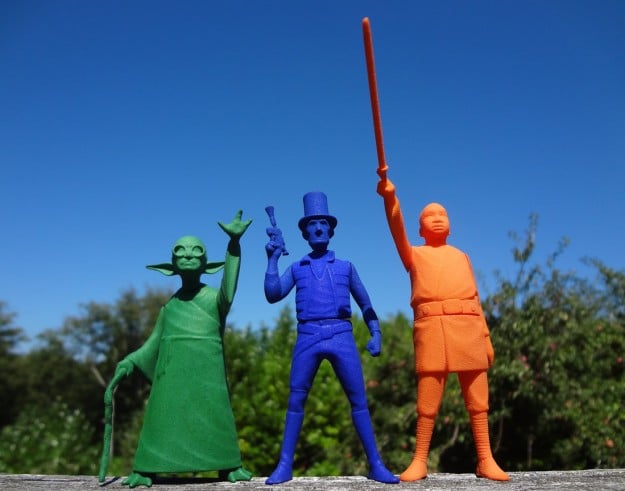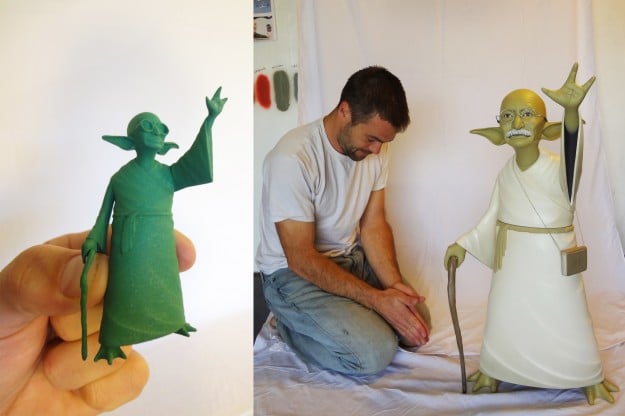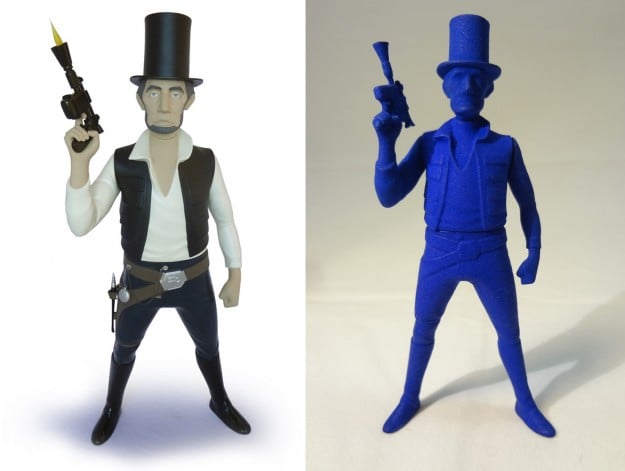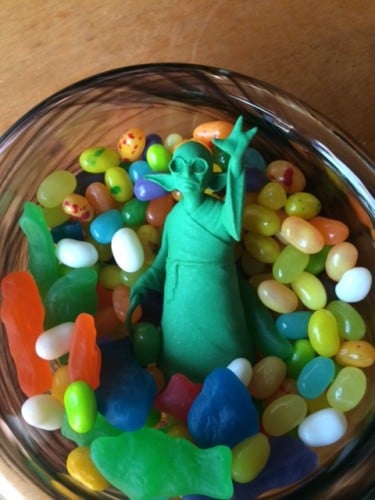
Sculptor Mike Leavitt has created an edition of 3D printed miniature versions of one-of-a-kind wooden sculptures from his “Empire Peaks” series through his Shapeways shop Innovation Kitchen. He spent two years designing and hand-sculpting the wood statue series and the pop culture mash-ups debuted at New York’s Jonathan LeVine Gallery in late 2013. Before opening night Leavitt had the largest wood statues, some standing 3 feet tall, scanned by a local hi-tech medical engineering firm. A classically trained wood sculptor based in the Pacific Northwestern United States, he taught himself the necessary software to bring smaller, 3D printed versions of his work to a new market. I caught up with Leavitt about how he translated his work with wood and chisels into 3D design and the possibilities that 3D printing offers to visual artists.
What inspired you to create 3D printed models of your “Empire Peaks” sculpture series?
Michael Leavitt: This might sound unexpected coming from an artist. My inspiration to create 3D printed “Empire Peaks” models was merely the marketing potential. As a full time visual artist, I’m the only one in charge of my career and I’m forced to consider these possibilities. I’ve passionately searched for ways to create affordable editions of my sculptures for years. It’s not as easy as it seems. Making quality prints of 2D paintings and canvases can be a challenge. Mass producing toys is a monumental task. Tons of quality control and capital investments are required. I learned of Shapeways somewhere during the process of 3D scanning my “Empire Peaks” figures. My first goal of 3D modelling and printing became crystal clear. Having the specific target really galvanized the learning process.
As a classically trained sculptor, what was your process like learning 3D modeling software?
ML: My learning curve with 3D modeling has been massively steep to say the least. First I have to learn to sit at the computer all day when I’d rather put my hands on something other than a keyboard and mouse. Next I have to learn a new language. Even ZBrush, my primary tool, is very intuitive but there’s a lot of lingo to absorb. I watched a ton of YouTube tutorials. I took copious notes. I could’ve gotten a full quarter’s worth of college credit for the time I logged. I almost had to chain myself to the computer. I guess the process was like training a free-roaming dog to stay in a small crate.
How is the process of preparing a piece for 3D printing similar to and different from your process of sculpting a one-of-a-kind piece?
ML: There are few similarities between preparing a piece for 3D printing and sculpting my originals. So far there are only small, brief moments when I feel like I’m actually “sculpting” on the computer. Maybe it’s just a matter of my learning curve. Once I get more comfortable it might feel more natural. A major difference between the two is that I really have to work hard to hold long, linear thoughts in my head while 3D modelling. Too often I want to do one simple, little thing- make this one knob a little smaller or something- and it requires several linear steps to execute. Whereas, in physical sculpting, it all comes naturally. I can just instinctively alter things without having to perform a prescribed series of actions. One might say physical sculpting requires it’s own tedious, methodical process. I don’t discount it. I’ve just been at it so much more of my life. Another major difference: the undo command. Wow. I still have to wrap my brain around it. It’s bizarre how easy it is to experiment while 3D sculpting. That one will keep on giving to me.
How does having a Shapeways shop and 3D printed versions of one-of-a-kind sculptures available open up new opportunities for you as an artist?
ML: For one thing, having the Shapeways prints allows me to more directly connect my work with people’s hands. My originals can be fragile or sensitive to hand oils over time. So we limit direct contact during exhibits. Ironically, I engineer moving body parts that can only be experienced with physical interaction. My original sculptures are also quite valuable and only rarely displayed in public. I do a show in New York about every two years. It’s only on display for about a month. I try as hard as I possibly can to tell everyone I can about the show. I promote like crazy. I really try to drive traffic to the gallery. Still only a small handful get to either own or experience the work in person. Having an on-demand 3D printing service accessible by the entire planet is nearly a dream come true.
Do you have any advice for other artists who might be interested in incorporating 3D design and printing into their practice?
ML: I’m still struggling with how to define the line between my fine art and 3D prints. I think it’s extremely important for artists to clearly communicate their intentions and definitions in this respect. Especially for an artist such as myself who is “established” to a certain degree. I have many long-time, loyal and heavily-invested collectors of my original works who deserve a clear delineation between the original, hand-crafted works for which they invested and the replicated editions available on a larger scale. My advice to other fine artists is to be careful, sensitive, and clear when incorporating 3D printing with their practice. I sincerely hope I’m following my own advice on this point.






